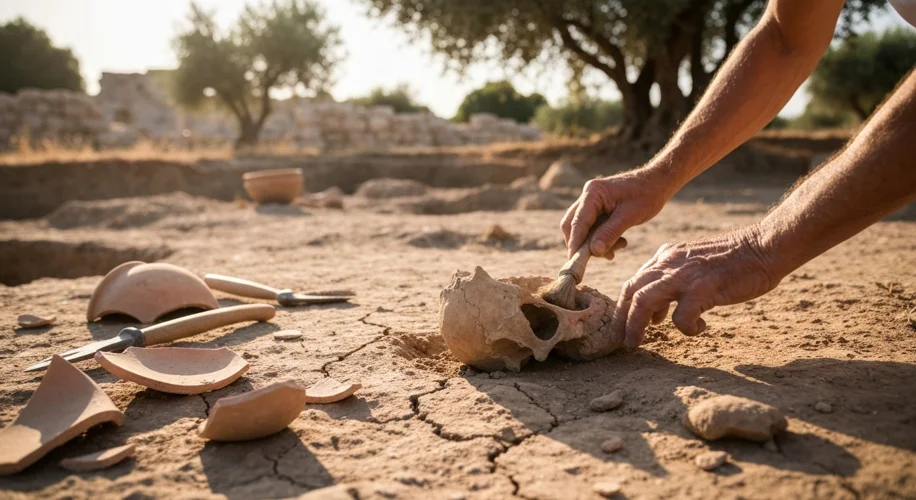Imagine standing on a windswept Greek hillside, the Aegean Sea shimmering in the distance. For decades, archaeologists have toiled here, piecing together the fragments of our ancient past. But in 1960, a discovery was made that would send ripples through the very foundations of human evolutionary theory. Unearthed in the region of Macedonia, a fossilized hominin skull, later famously known as the Petrálona skull, presented a tantalizing puzzle.
For years, the dating of this remarkable find remained a fierce debate, a scientific tug-of-war that challenged prevailing narratives. Initially, estimates placed it at a relatively young age. However, as radiometric dating techniques advanced, a different picture began to emerge. The Petrálona skull, with its unique blend of archaic and more modern features, hinted at a much earlier presence of hominins in southeastern Europe than previously believed.

This skull, belonging to an archaic Homo heidelbergensis or possibly an even earlier species, presented a morphological mosaic. It possessed a large cranial capacity, suggesting a brain size comparable to later hominins, yet retained some primitive traits. The brow ridges were pronounced, the skull was long and low, and the face, though partially reconstructed, indicated a robust build. Its very existence in Greece, if the more ancient dates were accurate, meant that our understanding of hominin migration out of Africa needed a serious revision. For so long, the prevailing model suggested a gradual spread across Asia and then into Europe, primarily through the Levant. But if hominins were already in Greece hundreds of thousands of years ago, it implied a much earlier, possibly more direct, route into Europe, perhaps across the Mediterranean land bridges that existed during glacial periods.
The implications were staggering. This wasn’t just about finding an old bone; it was about rewriting the map of human ancestry. The timeline, which had been painstakingly constructed with fossils from Africa and Asia, suddenly had a significant new chapter beginning in Europe. It raised questions: Were these early European hominins part of the same migratory wave, or did they represent a separate, earlier dispersal? Did they interact with other hominin groups? What was their environment like, and how did they survive and thrive?
Scholars like Professor Chris Stringer of the Natural History Museum have extensively discussed the complexities of dating and interpreting such fossils. The Petrálona skull’s dating has been particularly challenging, with various methods yielding different results, ranging from over 350,000 years old to potentially much younger. This inherent uncertainty, while frustrating for a definitive narrative, is also the engine of scientific progress. Each new analysis, each refined dating technique, adds another layer of understanding.
The discovery of the Petrálona skull, and others like it, serves as a powerful reminder that our evolutionary story is far from complete. It is a dynamic narrative, constantly being reshaped by new evidence unearthed from the Earth’s silent archives. While the exact age and lineage of the Petrálona hominin continue to be a subject of rigorous scientific inquiry, its very presence in Greece has undeniably pushed the boundaries of what we thought we knew about our ancient journey out of Africa, forcing us to reconsider the pathways and the pioneers who first walked our planet.
The legacy of the Petrálona skull is not just in its physical form, but in the questions it continues to provoke, urging us to look deeper, dig further, and continually revise our understanding of where we came from and how we became who we are today.

